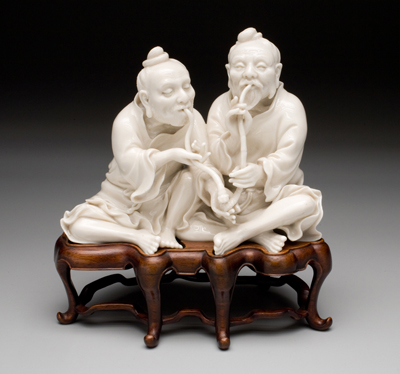
CERAMICS
-Sandy Brown (b. 1946)-
.jpg)
.jpg)
.jpg)
Ho Ch'a-tsung, Chinese (1665-1710)
5 inches H; 6 inches W
Gift of Daniel Jarrett Hathaway
1937.500.086
HOW IS IT MADE?
The ceramic artist works both as a sculptor and painter. Artists working with clay physically shape every part of the object to their liking. The ceramicist is immersed in the clay, molding and kneading the clay into various forms with his or her hands. Some ceramic artists may start off with sketches of their object, drawing from all angles and transferring what they want from a two-dimensional to a three-dimensional object. There is vast flexibility in expression when working with the medium of clay.
Pottery, tableware, porcelain, bone china, tiles and earthenware are all considered ceramics since they are made from clay. Ceramic art is broken up into two different categories; they can either be functional or non-functional. Functional ceramics usually include pottery, vessels, tiles, tableware, or anything made with a functional purpose in mind. Non-functional ceramics can be abstract forms or non-representational objects.
The artist begins working with clay on a potter's wheel or builds an object using one of a variety of techniques. The coil technique is when the artist rolls clay between his or her hands, creating a snake-like coil, and then stacks the coils on top of each other to build the object. If the artist chooses to use the slab technique, he or she rolls out a slab of clay until it is thin like a pancake and then builds the work of art connecting the slabs. Sometimes both techniques can be used; the possibilities when working with clay are endless. When it is ready to be fired in the kiln, the clay form undergoes molecular changes when heated at high temperatures. Once fired, usually between 660 and 1470 degrees Fahrenheit, the clay is converted into a solid ceramic. Usually clay objects are then decorated by applying a treatment to the surface to give it a shiny or matte finish. Ceramics can be glazed, painted, or coated in a waterproofing substance.


